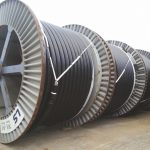In line with efforts to enhance sustainable development in all aspects of company operations, Borealis is reducing its CO2 footprint at its own facilities.
February 5, 2020

Borealis has announced an important milestone in its efforts to facilitate a more sustainable energy future. The high voltage direct current (HVDC) cable compound based on Borealis Borlink™ technology is being used in crosslinked polyethylene (XLPE) power cables qualified for the tender of the “German corridor projects“. This enormous undertaking will transport renewable energy from wind farms off the north coast of Germany to southern areas of the country. Borealis Borlink is a crucial component in XLPE high-voltage power cables enabling HVDC technology transmitting electricity over longer distances with minimal losses. What is more, the material XLPE offers the additional sustainability benefit of being recyclable.
As a responsible supplier of value-adding polymers, Borealis has laid out key objectives in its overall sustainability strategy: to enhance sustainable development in all aspects of company operations as well as in the entire supply chain; and to identify business growth opportunities which promote greater sustainability. In practice, this means innovating and collaborating with partners in order to develop polyolefins-based solutions that enhance energy efficiency, reduce carbon emissions, and accelerate the uptake of renewable energy sources on the largest possible scale. XLPE made with Borealis Borlink extruded HVDC technology is one prime example of how these objectives have been successfully realized in practice.
By 2030, the company aims to have significantly reduced CO2 emissions from operations by using 50 percent of electricity from renewable sources; by increasing energy efficiency by 20 percent compared to a 2015 baseline; practicing zero continuous flaring; and capitalizing on opportunities for carbon capture, utilization, and storage.




